Run, Walk, Bike: Doctors Open Up About Their Own Heart-Healthy Exercise Habits
Exercise is the cornerstone of CVD risk prevention, but just how good are doctors at practicing what they preach? TCTMD finds out.

Every doctor knows that a healthy lifestyle, one with daily doses of moderate-to-vigorous physical activity, is the cornerstone of cardiovascular risk prevention. But after a long day in the lab or clinic, the thought of going for a run, doing some yoga, or even just picking up a few weights can be daunting.
Recently, as part of a series on exercise and the busy physician, TCTMD set out to discover through a reader survey and in-depth interviews if cardiologists and other medical professionals were practicing what they preach when it comes to physical activity. And while most doctors say they are crunched for time, some, it appears, have mastered the art of multitasking, leaving not an idle minute of the day go to waste. These cardiologists have managed to turn the daily commute into their own personal playground, either by running and cycling to work, while others lift weights while making coffee or brushing their teeth.
|
This is Part 3 of a 3-part series looking at exercise from a provider’s perspective, both for their patients and for themselves. Read Part 1 here and Part 2 here. |
Among 330 TCTMD readers, nearly 70% reported meeting the American Heart Association (AHA) recommendation of 30 minutes of moderate-intensity exercise five times per week (or 25 minutes of vigorous-intensity activity three times per week). And most readers seemed to enjoy getting sweaty, too. Nearly 90% of those surveyed said daily exercise was “very necessary or necessary” and many considered physical activity “beneficial,” “fun,” and “pleasurable.” Still, no small number of respondents considered exercise a time-consuming process, and a half dozen flat out said it was unenjoyable.
Benjamin Levine, MD (University of Texas Southwestern Medical Center, Dallas), the director of the Institute for Exercise and Environmental Medicine at his institution, is one cardiologist who clearly believes exercise is both pleasurable and very necessary. As a former collegiate competitive wrestler and tennis player, Levine has found a way to fit physical exercise into his daily routine for nearly 40 years.
“Exercise, in my opinion, has to be part of your personal hygiene,” he told TCTMD. “I talk to my patients and ask, ‘Do you brush your teeth every day? Do you shower? Do you change your underwear?’ These are things one does for personal hygiene, and exercise is no different. For me, it’s an intrinsic part of life, and although life can occasionally get in the way—I had surgery for colon cancer, for example, and that put me off for a little bit—there are many ways to stay active even under adverse circumstances.”
Levine, who has been cancer-free for more than 10 years, owns 10 or 11 pieces of exercise equipment, everything from a rowing machine to a Nordic track elliptical trainer to a VersaClimber. He is obviously among the truly dedicated willing to do whatever it takes to get his 30 to 60 minutes of exercise daily. When his children were small, he’d work out late at night after he’d put them to bed. “I’d be exercising to Jay Leno at 10:30 PM at night,” he said. “However you work it into your schedule, it’s what you have to do.”
Levine’s commitment isn’t exactly the norm.
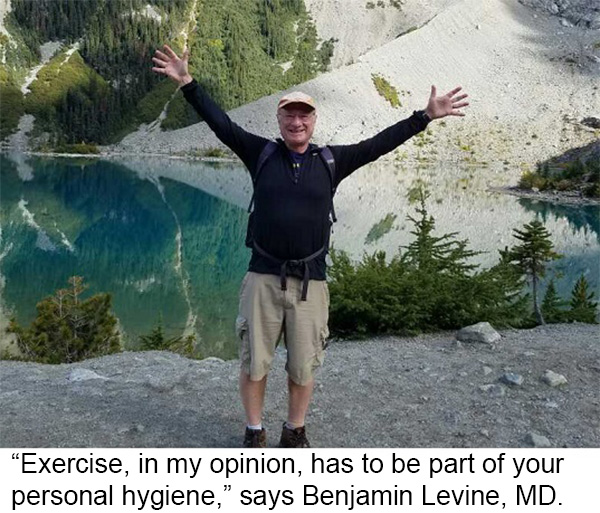 For example, although nearly three-quarters of the TCTMD readers surveyed met the AHA targets, just 41.4% of respondents considered their level of fitness as “excellent” or “very good.” Interestingly, 25% of those surveyed said they exercised less today than they did 5 years ago and 33% considered themselves less fit. In contrast, 36% of those who answered the TCTMD survey said they exercise more today than they did 5 years ago and 31% said they are in better shape. Rounding it out, approximately 38% said they exercised the same amount and are as fit as their younger selves.
For example, although nearly three-quarters of the TCTMD readers surveyed met the AHA targets, just 41.4% of respondents considered their level of fitness as “excellent” or “very good.” Interestingly, 25% of those surveyed said they exercised less today than they did 5 years ago and 33% considered themselves less fit. In contrast, 36% of those who answered the TCTMD survey said they exercise more today than they did 5 years ago and 31% said they are in better shape. Rounding it out, approximately 38% said they exercised the same amount and are as fit as their younger selves.
Time Constraints and Family Commitments
Not surprisingly, time is the critical factor in the daily grind, with exercise often given short shrift when pushed up against commitments to work and family. Overall, 61% of TCTMD readers cited work as the primary reason they are unable to exercise on any given day, with nearly one-third of respondents saying they work 10 or more hours per day. Another 17% said family commitments held them back from getting active, and one in 10 cited fatigue as the primary reason they couldn’t work out.
One cardiac surgeon said he simply “arrives home very tired” and is unable to exercise.
Speaking with TCTMD, Jennifer Tremmel, MD (Stanford University Medical Center, CA), said there are “ideal” days, those when she is able to rise early and run before work, and then the “reality,” which is what happens when other commitments take over. “Interestingly, it’s been a difficult summer, and I haven’t been exercising at all,” she said. “Again, that’s the reality. Sometimes life gets in the way of taking care of ourselves.”
This past summer, Tremmel was busy completing a grant application and with board certification, not to mention expanding her interventional cardiology skills into chronic total occlusions. “It became too much and I was staying up later, which makes it harder to get up in the morning,” she said. “And life’s been like that. I can look back at certain times, like in my fellowship, when I didn’t have time. For me, that’s always been helpful in dealing with my patients, because I get it. If they get off track, which they will if they’re honest about it, we can discuss how to get back on track and that it’s OK.”
Tremmel, who is the director of the Secondary Prevention Program and clinical director of the Women’s Heart Health Clinic at Stanford, said her motto is to “try to make more good decisions than not” over her lifetime and to do the best she can, which is what she also tells her patients.
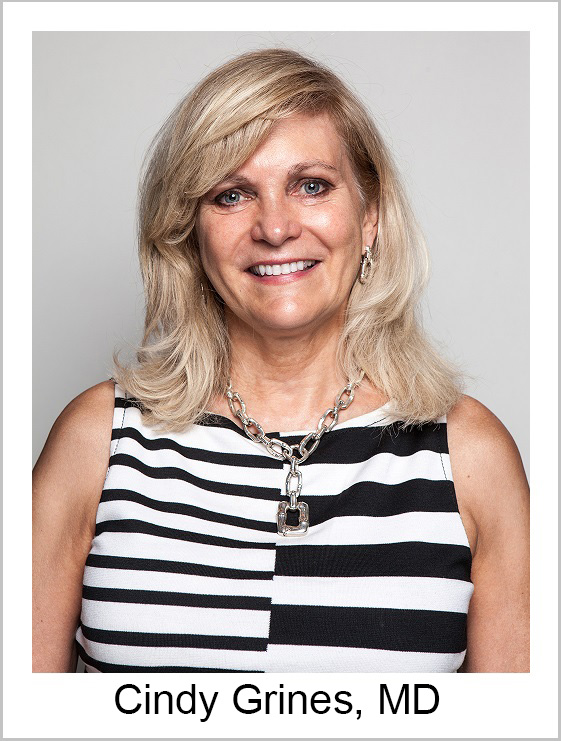 Cindy Grines, MD (Detroit Medical Center, MI), an interventional cardiologist, is awake at 4:45 AM and treating her first patient by 6:00 AM on days she works in the cath laboratory. When in the lab, she skips out on exercise due to a lack of time but also because of the aches and pains that result from standing all day in lead. On clinic and meeting days, however, she starts her day lifting weights in the kitchen while making coffee and then hitting the stationary bicycle in her home.
Cindy Grines, MD (Detroit Medical Center, MI), an interventional cardiologist, is awake at 4:45 AM and treating her first patient by 6:00 AM on days she works in the cath laboratory. When in the lab, she skips out on exercise due to a lack of time but also because of the aches and pains that result from standing all day in lead. On clinic and meeting days, however, she starts her day lifting weights in the kitchen while making coffee and then hitting the stationary bicycle in her home.
“It is difficult to find time, and sometimes I am a weekend warrior,” she told TCTMD. “I have to make a commitment to exercise, then stick to it. My time is so limited and I cannot take the time to drive to a club, change clothes, etc. I have to do it at home or perform outside activities right out of my door.”
Grines, who is also the vice president of the Detroit Medical Center Heart Hospital, makes it a goal to be active while working, such as by climbing several flights of stairs during the day or while at meetings like the recent TCT. She added that she’ll try to “kill two birds with one stone” with exercise, such as sightseeing on foot, doing squats while brushing her teeth, and taking the kids out in a baby stroller when they were young. She has a passion for outdoor activities—biking, hiking, and swimming, for example—and tries to do as much as she can with friends so that she socialize at the same time. “Since I tore my meniscus, unfortunately I no longer ski or play tennis,” she said.
The Multitasking Run Commuter
Similarly, Aaron Baggish, MD (Massachusetts General Hospital, Boston, MA), is a cardiologist who also knows the conflicts that arise with a busy work schedule and family responsibilities. To overcome those challenges, he combines daily physical activity with his commute to and from work.
 “My formula is pretty simple,” said Baggish, who also serves as the co-medical director of the Boston Marathon. “I live about 5 miles away from work. We actually used to live much further away from the hospital, but when my first child was born 8 years ago we made a decision to move closer because I was just wasting her breakfast and dinner times on the train going back and forth. Part of that decision was going to allow me to do what I had done in much younger years, which is to be an on-foot commuter.”
“My formula is pretty simple,” said Baggish, who also serves as the co-medical director of the Boston Marathon. “I live about 5 miles away from work. We actually used to live much further away from the hospital, but when my first child was born 8 years ago we made a decision to move closer because I was just wasting her breakfast and dinner times on the train going back and forth. Part of that decision was going to allow me to do what I had done in much younger years, which is to be an on-foot commuter.”
Baggish said the run commute is the “best of the best,” as the travel time is equal, if not a little bit shorter, than what he would spend if he chose to drive or take public transportation to work. Equally important, he gets his daily dose of exercise without impinging on family time. At the hospital, the reaction to his method of transportation ranges from the impressed and the curious to those who think he might be a little bit crazy.
“I don’t think that anybody is too, too surprised, but certainly when I roll into the office in the morning and I’m sweaty, people definitely look twice.”
To make the run commute possible, Baggish drives into the hospital on a Sunday, dropping off pants, shirts, ties, or suits, and returns at the end of the week to collect the clothing. The routine, he said, is the only way he is able to get his daily exercise amidst 70 and 80 hour work weeks and three children at home. “The moment you walk in the door [at home and at work], your time is no longer yours,” he said. “Part of this is all about trying to fit it into a schedule. I’m just not one of those people who loves to wake up at four in the morning.”
This unique “run to work” schedule is not typical, however. Among those who participated in the TCTMD survey, 80% reported driving to work. There were some encouraging signs, though, with 8.6% saying they cycle to the hospital and 7.6% reporting they walk. Slightly more than 4% of those surveyed reported taking public transportation.
Carl ‘Chip’ Lavie, MD (John Ochsner Heart and Vascular Institute, New Orleans, LA), said he runs approximately 5 days a week for about 45 minutes and adds 1 or 2 days on the elliptical machine. On the weekends, at least in the cooler months, he’ll do a longer run. The primary reasons for running are relaxation, general health, and to be able to eat more, he told TCTMD.
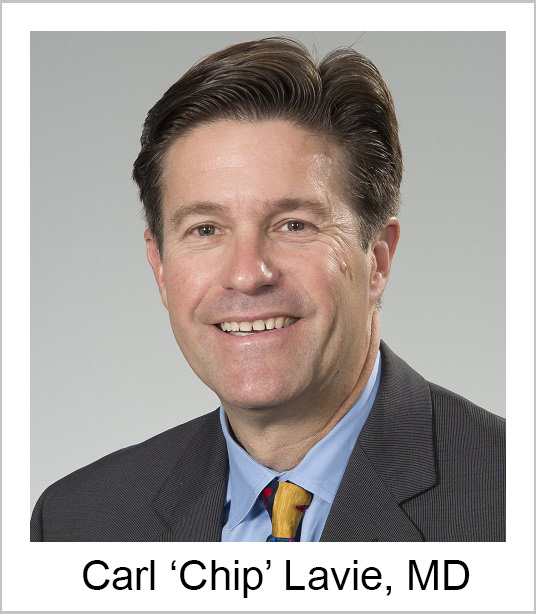 Like other multitaskers, Lavie uses the running time, often spent along the levees of the Mississippi River during his lunch hour or around Lake Pontchartrain on weekends, to stay on top of work. “I’m organizing my thoughts for papers and lectures,” he said. “And I certainly get the psychological benefits, too.”
Like other multitaskers, Lavie uses the running time, often spent along the levees of the Mississippi River during his lunch hour or around Lake Pontchartrain on weekends, to stay on top of work. “I’m organizing my thoughts for papers and lectures,” he said. “And I certainly get the psychological benefits, too.”
Tremmel said she is at the hospital around 7:30 or 8:00 AM and home again by 7:00 PM. Years ago, she learned that she is too tired in the evenings for working out and decided “to get it done in the mornings or it wasn’t going to happen.” When locked into her routine, she runs, does resistance training, and other simple exercises she can do at home, such pushups and sit-ups. For a warm-up, Tremmel dances. Years ago, she was struck by a car while cycling and stopped riding after that incident. Although she says not everybody likes to run, for her it’s simply the most convenient.
Grines told TCTMD that while she loves to get outdoors, indoor exercise, such as her time on the bike, is purely for health. “I have a million excuses not to exercise indoors, so I tell myself I will only exercise for 5 minutes,” she said. “It is pretty embarrassing if you can’t even give yourself 5 minutes. Then I follow a vigorous interval program that is a good workout in 5 minutes, but I usually go longer because I become energized.”
In the TCTMD survey, while 45.2% said running was their choice of physical activity when they exercised, more than one-third reported cycling and walking. Just over 30% of those surveyed said they lifted weights, 21.8% said they swam, and 13.0% reported doing yoga. Tennis was also listed as a favorite form of exercise, as were soccer, hiking, and martial arts. In terms of time, 32.8% of individuals surveyed said they perform 2 to 4 hours of exercise each week and 28.6% reported doing between 4 and 6 hours. For the truly devoted, 12.4% said they do between 6 and 8 hours weekly while 6.0% are active for 8 to 10 hours.
Just a Little Exercise Goes a Long Way
Paul Thompson, MD (Hartford Hospital, CT), who ran in the 1972 Olympic Marathon Trials when he was a third-year medical student, would definitely fall into the “active” category. When training for the trials, not unlike Baggish, Thompson ran 6 miles to the hospital and then another 6 miles home at night. In 1976, he finished the Boston Marathon in 16th place with a time of 2:29:38, his best placing at the historical race.
Needless to say, such superhuman running is not the norm, nor is it a prerequisite for optimal health, as Thompson, Baggish, Lavie, and Tremmel all attested. Lavie, along with James O’Keefe, MD (Mid America Heart Institute of St. Luke’s Hospital, Kansas City, MO), and others, has published studies showing that the mortality and cardiovascular benefits of exercise, specifically running, can occur with just 5 to 10 minutes at a relatively easy pace. The reason anybody would exercise beyond 30 minutes would be because they’re training for an event or because they enjoy it, Lavie said, which he does.
Baggish also knows his weekly running volume does not make him any healthier than if he were to drastically cut back the mileage. “You don’t need a lot of exercise to maximize health—you need some for sure, but you don’t need a lot,” he said.
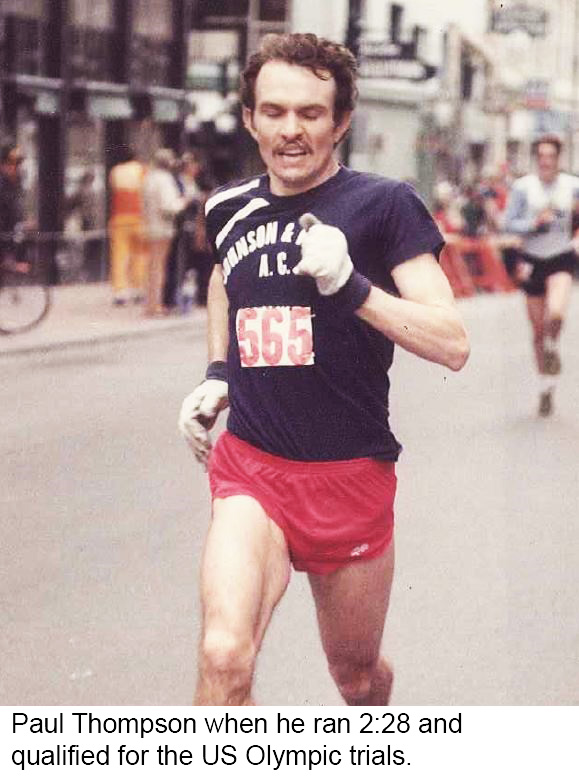 In the TCTMD survey, there were a number of respondents who cited “competition” and “performance” as their motivation for physical activity, but they were clearly in the minority. Many stated their goal was improved overall health, weight control, and continued physical mobility. “I love to feel and look good,” one physician assistant stated. “It is incredibly wonderful to be able to go on a hike, to do day-to-day activities with my family without struggling.”
In the TCTMD survey, there were a number of respondents who cited “competition” and “performance” as their motivation for physical activity, but they were clearly in the minority. Many stated their goal was improved overall health, weight control, and continued physical mobility. “I love to feel and look good,” one physician assistant stated. “It is incredibly wonderful to be able to go on a hike, to do day-to-day activities with my family without struggling.”
Some spoke of the social perks of exercise, while many participated for the cardiovascular benefits, including one fellow who stated the goal of exercise was to “offset my future cardiovascular demise given my family history, type A personality, and the hours worked. Also, it’s relaxing.”
Numerous interventional cardiologists cited their physical and mental health as reasons for staying active, including the management of stress and the chance to disconnect from their daily duties. For example, several said exercise helps offset physician burnout and improves quality of life. One interventional cardiologist began swimming after he developed a “damn neck injury” from wearing lead in the cath lab, and the activity, he stated, helps manage the discomfort. In fact, several mentioned the occupational hazards of the cath lab and the desire to offset those risks by staying in shape.
Some had a sense of humor about it, too, with one saying he exercises to keep himself off the cath table as a patient, while others gave a friendly shout-out to their stomachs, saying exercise allowed them to eat more. A number said they exercised to reduce their lifetime risk of developing diabetes, cardiovascular disease, and other obesity-related illnesses.
Don’t Need to Take a Statin to Prescribe One
While Thompson’s running put him amongst the American elite, he doesn’t claim to be a role model, nor does he fault any health professional who struggles with meeting even the barest of exercise programs. He also doesn’t use his own running accolades or current habits to motivate patients. For him, riding his bicycle to and from work in the summer is a form of multitasking, as he doesn’t lose a lot of time when compared with the time spent in traffic.
“People have complex lives,” said Thompson. “I always ran less from a health point of view but rather because I liked doing it and I liked being competitive at it.”
Levine agreed, telling TCTMD he’s not necessarily striving to be a role model for patients. While patients are motivated, to some extent, by their healthcare provider, Levine said it’s not a prerequisite for a physician to be physically active.
“You don’t have to be taking a statin to tell your patient to take a statin, or taking an antibiotic to prescribe an antibiotic,” he said. “Exercise is medicine, I really believe that, and that’s the mantra of the American College of Sports Medicine. I prescribe it to my patients, and I happen to also take that medicine. I think it’s critically important—it’s the one thing we can do to maximize our ability to live vigorously and healthily across the lifespan.”
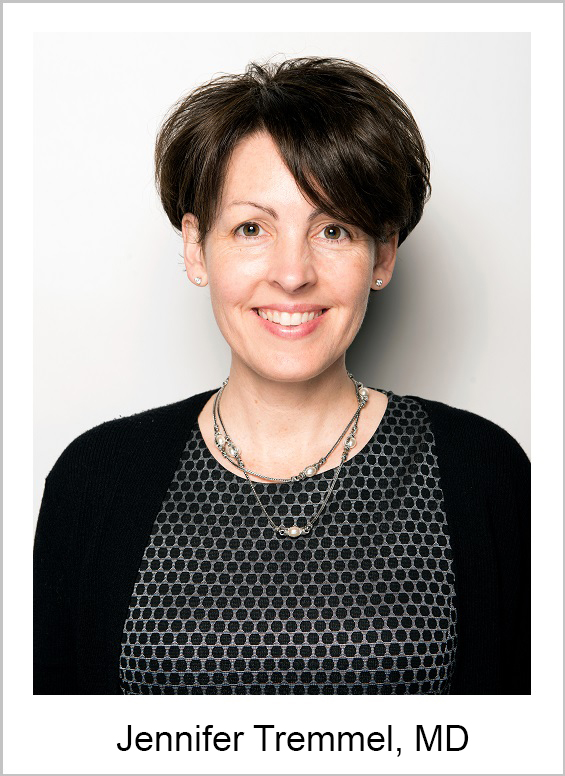 Tremmel countered that she has a tough time advising patients on exercise if she can’t do it herself. “I believe in being honest about it, though,” she said. “A lot of patients come in and make stuff up. They’ve learned what I want them to say—‘Yeah, I’m walking 30 minutes a day.’ They know what they’re supposed to do, but I don’t want them to dread the [exercise] question. I always ask, ‘Are you exercising?’ But I don’t want to not tell me the truth, because then I can’t help them. We can’t figure out the barriers and how to change things.”
Tremmel countered that she has a tough time advising patients on exercise if she can’t do it herself. “I believe in being honest about it, though,” she said. “A lot of patients come in and make stuff up. They’ve learned what I want them to say—‘Yeah, I’m walking 30 minutes a day.’ They know what they’re supposed to do, but I don’t want them to dread the [exercise] question. I always ask, ‘Are you exercising?’ But I don’t want to not tell me the truth, because then I can’t help them. We can’t figure out the barriers and how to change things.”
Lavie thinks it makes sense for doctors to also practice what they preach. In the most extreme case, it would be strange for a physician to push smoking cessation if they also smoked, or urged a patient to lose weight if they were obese.
“It doesn’t mean you can’t treat the patient better than you’re treating yourself, but I do think it’s only human nature you’re going to be more enthusiastic if you’re a believer,” he said. “And people see it, too. I have a lot of patients who know I exercise a lot. Some of them will see me running, or they’ll talk to my staff—word gets out. Several of them would even look up my times in the newspaper, or they might go to a race and see me out there. I think that’s good promotion for physical activity.”
This 3-part series also includes a feature-length look at the struggles exercise specialists face when prescribing physical activity and full results from our exercise survey.
Michael O’Riordan is the Managing Editor for TCTMD. He completed his undergraduate degrees at Queen’s University in Kingston, ON, and…
Read Full BioDisclosures
- Levine, Baggish, Lavie, Thompson, and Tremmel report no relevant conflicts of interest.


James Brewer